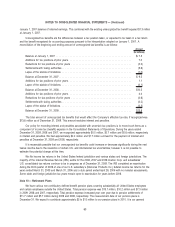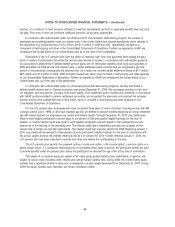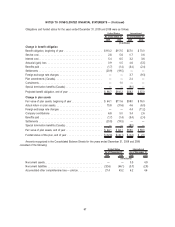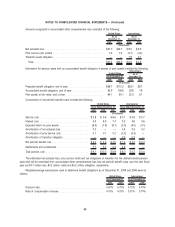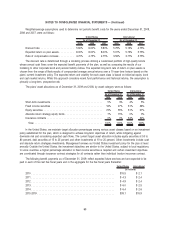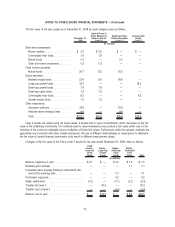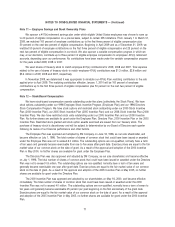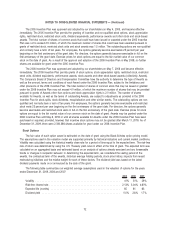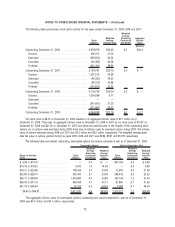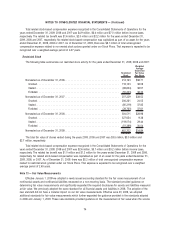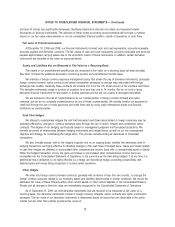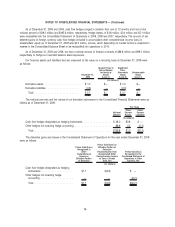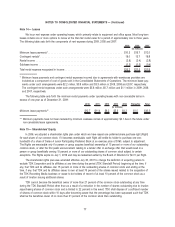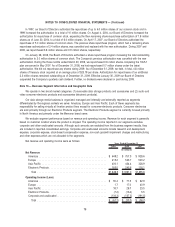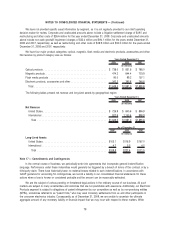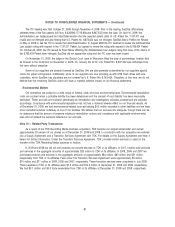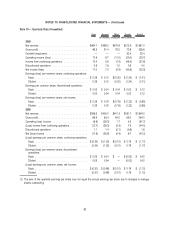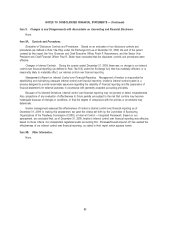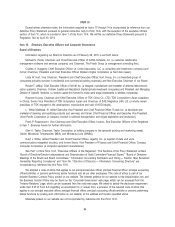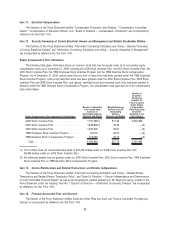Memorex 2009 Annual Report Download - page 82
Download and view the complete annual report
Please find page 82 of the 2009 Memorex annual report below. You can navigate through the pages in the report by either clicking on the pages listed below, or by using the keyword search tool below to find specific information within the annual report.and level of activity has significantly decreased, identifying transactions that are not orderly and expanded interim
disclosures on financial instruments. The adoption of these recent accounting pronouncements did not have a material
impact on our fair value measurements or on our consolidated financial position, results of operations or cash flows.
Fair value of financial instruments
At December 31, 2009 and 2008, our financial instruments included cash and cash equivalents, accounts receivable,
accounts payable and derivative contracts. The fair values of cash and cash equivalents, accounts receivable and accounts
payable approximated carrying values due to the short-term nature of these instruments. In addition, certain derivative
instruments are recorded at fair value as discussed below.
Assets and Liabilities that are Measured at Fair Value on a Recurring Basis
The assets in our postretirement benefit plans are measured at fair value on a recurring basis (at least annually).
See Note 10 herein for additional discussion concerning pension and postretirement benefit plans.
We maintain a foreign currency exposure management policy that allows the use of derivative instruments, principally
foreign currency forward, option contracts and option combination strategies to manage risks associated with foreign
exchange rate volatility. Generally, these contracts are entered into to fix the U.S. dollar amount of the eventual cash flows.
The derivative instruments range in duration at inception from less than one to 14 months. We do not hold or issue
derivative financial instruments for speculative or trading purposes and we are not a party to leveraged derivatives.
We are exposed to the risk of nonperformance by our counter-parties in foreign currency forward and option
contracts, but we do not anticipate nonperformance by any of these counter-parties. We actively monitor our exposure to
credit risk through the use of credit approvals and credit limits and by using major international banks and financial
institutions as counter-parties.
Cash Flow Hedges
We attempt to substantially mitigate the risk that forecasted cash flows denominated in foreign currencies may be
adversely affected by changes in currency exchange rates through the use of option, forward and combination option
contracts. The degree of our hedging can fluctuate based on management judgment and forecasted projections. We
formally document all relationships between hedging instruments and hedged items, as well as our risk management
objective and strategy for undertaking the hedge items. This process includes linking all derivatives to forecasted
transactions.
We also formally assess, both at the hedge’s inception and on an ongoing basis, whether the derivatives used in
hedging transactions are highly effective in offsetting changes in the cash flows of hedged items. Gains and losses related
to cash flow hedges are deferred in accumulated other comprehensive income (loss) with a corresponding asset or liability.
When the hedged transaction occurs, the gains and losses in accumulated other comprehensive income (loss) are
reclassified into the Consolidated Statement of Operations in the same line as the item being hedged. If at any time it is
determined that a derivative is not highly effective as a hedge, we discontinue hedge accounting prospectively, with
deferred gains and losses being recognized in current period operations.
Other Hedges
We enter into foreign currency forward contracts, generally with durations of less than two months, to manage the
foreign currency exposure related to our monetary assets and liabilities denominated in foreign currencies. We record the
estimated fair value of these forwards within other current assets or other current liabilities in the Consolidated Balance
Sheets and all changes in their fair value are immediately recognized in the Consolidated Statement of Operations.
As of December 31, 2009, we held derivative instruments that are required to be measured at fair value on a
recurring basis. Our derivative instruments consist of foreign currency forwards, option contracts and option combination
strategies. The fair value of our derivative instruments is determined based on inputs that are observable in the public
market, but are other than publicly quoted prices (Level 2).
75
NOTES TO CONSOLIDATED FINANCIAL STATEMENTS — (Continued)


